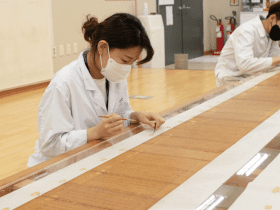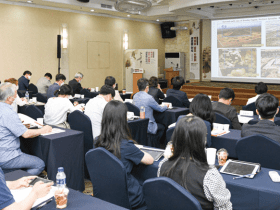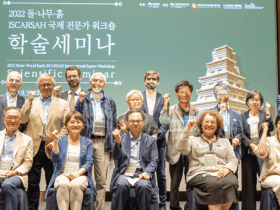The NRICH succeeded in reproducing the artificial inorganic pigment Dongrok (copper green rust), which was mainly used in Dancheong (multicolored patchwork) for wooden buildings as well as hanging Buddhist paintings, and temple murals, through a traditional manufacturing technique.
This research aiming to restore materials and manufacturing techniques for traditional artificial inorganic pigments was conducted from 2019 to 2022, following the research on natural inorganic pigments for Dancheong. Representative traditional artificial inorganic pigments include Dongrok, Heocheong (smalt), Miltaseung (litharge), Yeondan (lead red) and Yeonbaek (lead white). Among them, it has been difficult to restore Dongrok thus far because the material and manufacturing techniques were not identified clearly unlike other pigments.
In order to reproduce the manufacturing techniques of traditional pigment Dongrok, the acid corrosion and salt corrosion methods were attempted in consecutive order.
As a result, the Dongrok pigment reproduced through the salt corrosion method using pure copper and five types of copper alloy powder as raw material has the same color and component as the Hayeob color of the old Dancheong in the actual cultural heritage and has the most similar particle shape.
The research has a great significance for defining the materials and identifying the characteristics of Dongrok, which is the pigment of Hayeob color widely used in colored cultural heritage for a long time. In future, the NRICH is planning to compile the research result on manufacturing techniques of traditional Dancheong pigment, present it to the academic world and make detailed research outcomes open to the public including the application for patents of the manufacturing techniques, technology transfer and publication of a comprehensive report.






